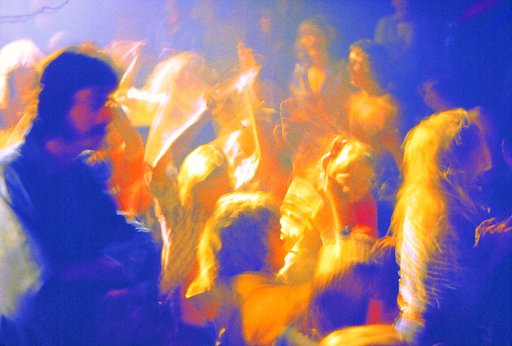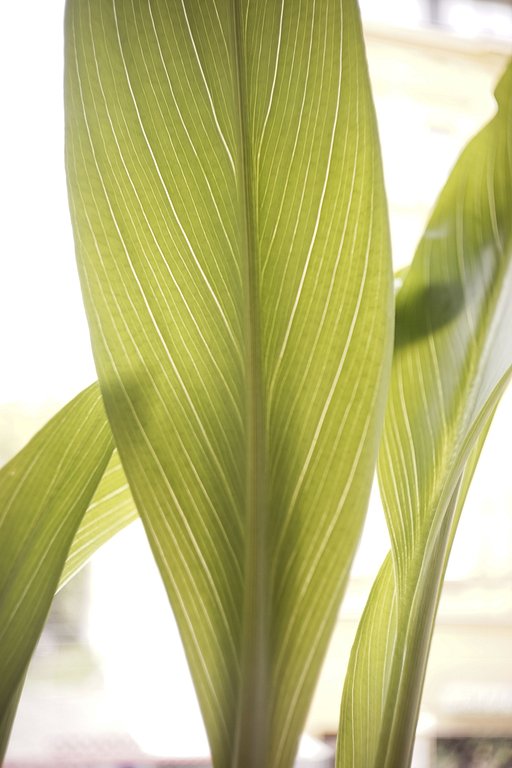Lessons from a Disposable Camera - an Interview with Skyler Adams
15 Share TweetDuring a time when people are so engrossed by analogue photography gear, what it does, what’s unique about it, and what technological edge it has to offer, there seems to be fewer photographs. Less thought goes into the whole process of image making. Skyler Adams, an engineer and independent photographer based out of Los Angeles and Boston saw an opening to improve photography practices — and he took it. What did he do? He loaded disposable cameras with different films like Kodak Ektar, Ilford Delta, and Fujifilm NPS and got to work. Now, that's a photo project you don't see often enough.

Hi, Skyler. What's the story behind your disposable camera experiment?
I got into photography for a vain reason, really. I had moved to San Francisco for the summer for an internship and I was the only one who wasn't 21 while everyone else went to bars. I bought a camera to help myself go out alone and make interesting photographs and make my life look cool. Over time, I bought more gear and did one photo project after another until I took a photography class in university.

There I found all the decisions offered by a modern DSLR work for some types of photography, but distracted me from socialization. When I made a photo project I spent a lot of time setting up the set and playing with camera settings and not enough time connecting with the people around me.
What are the things you learned from shooting with a disposable camera?
I am perfectly content with having two things to control instead of dozens. With a disposable camera, I can choose when and where I trip the shutter and if I use the flash. The first gets me composition and story. The second gets me context — I can choose to highlight the object in the middle of the frame closer to the camera with flash, or turn it off and emphasize everything equally.

What had you aimed to get out of your experiment?
Living in Boston and LA, I see lots of people treat their camera as a fashion accessory or cherished heirloom. These cameras live inside expensive padded camera bags and only see the light of day to take family photos or weekend photo projects. That's fine! People can do whatever they like with what they buy. But consumer marketing of cameras is all about the lifestyle they suggest. Buy this and you'll take photos doing something amazing. What if I tried the lifestyle and tried to record it on the worst camera I could buy?

What is your favorite thing about it?
I can afford to make mistakes. Film isn't that expensive and the cameras are so cheap that I can destroy them trying to get the shot I want. Wade into the ocean? Sure. Take apart your camera to add a flash accessory? Sure, don't shock yourself. Forget it at home? No worries, you can get a spare easily. If I wasn't sure my film in my camera would get me a good shot, I would bring two disposables and shoot them simultaneously.

In a time when digital photography gear offers more convenience and a different approach to photography, why stick with film?
I don't think you need to “stick” to anything. There's a time and place for digital photography — creating fast and convenient photographs. If you want to Instagram your night out or shoot the Olympics for tomorrow's paper, digital is ideal. Film is cozy and grounded. At the end of a structured fashion shoot when I'm sure I got the shot, I can relax with a few frames on a disposable. Or if I'm out with friends I can make a picture to remember the scene but then forget about it and have fun. I'll be reminded about it a week or two later after developing. As someone who used to “shoot for Instagram” I would get my perfect shot and then carry it around in my head all day instead of enjoying myself.
How would you describe the shots you created with the disposable camera?
You'd think they would be low quality but actually I was impressed by the fidelity of the plastic lens — some of my 6mp scans are pretty sharp. I find it matters more on the lighting: un-coated plastic means you might as well give up shooting into the sun.
“Reportage” would be another way to describe it. The disposable camera is about 30 mm which is roughly the same as cell phone cameras. I've grown quite fond of it — it's more intimate than the classic 35 mm but not too distorting.
People look great on disposable cameras. Most of the battle with portrait photography is to get someone to show you themselves. Great portrait photographers have assistants to run the camera while they would sit next to it interacting with the subject directly. When you point a phone or DSLR at people they go into their “Facebook pose.” When you point a disposable camera at someone they don't give a s***.


Did you experience any challenges when you did the experiment?
Cell phones are actually similar to disposable cameras, only a lot better. You have similar amounts of control but they can handle many more situations. Disposables are good too but the limitations of price and film chemistry means they love bright light and simple “family picture” scenes. Any time I was trying a weird film or a weird lighting situation I had to pre-visualize what the scene would look like. In comparison my D750 is a what-you-see-is-what-you-get-even-in-pitch-black magic wand.

Do you have other projects lined up?
I just moved to LA to be an engineer at SpaceX so my dream is to photograph a launch up close on film. I've seen some amazing rocket photography recently and I want to bring the ethereal qualities of film to the scene. I also love Fuji instant cameras but I'm disappointed how there aren't any with good lenses. I'm trying to build and eventually Kickstart an Instax back for medium format cameras like Hasselblad. I've ripped apart two Lomo Instax backs and I'm 3d printing adapters already.


What was the biggest takeaway from the disposable camera experiment?
Just buy one. Disposable cameras are dying so get one on eBay for like $5. Throw it in your bag or car and take a picture when you feel like it. No stress.
Any last words for our readers?
There's great photography online but it's hard to find. Mix up your photography appetite with some photo books and magazines.
We would like to express our gratitude to Skyler for letting us feature his images on the Magazine. If you're interested in Skyler's work, you may head over to his Instagram for more.
written by cheeo on 2018-04-14























No Comments